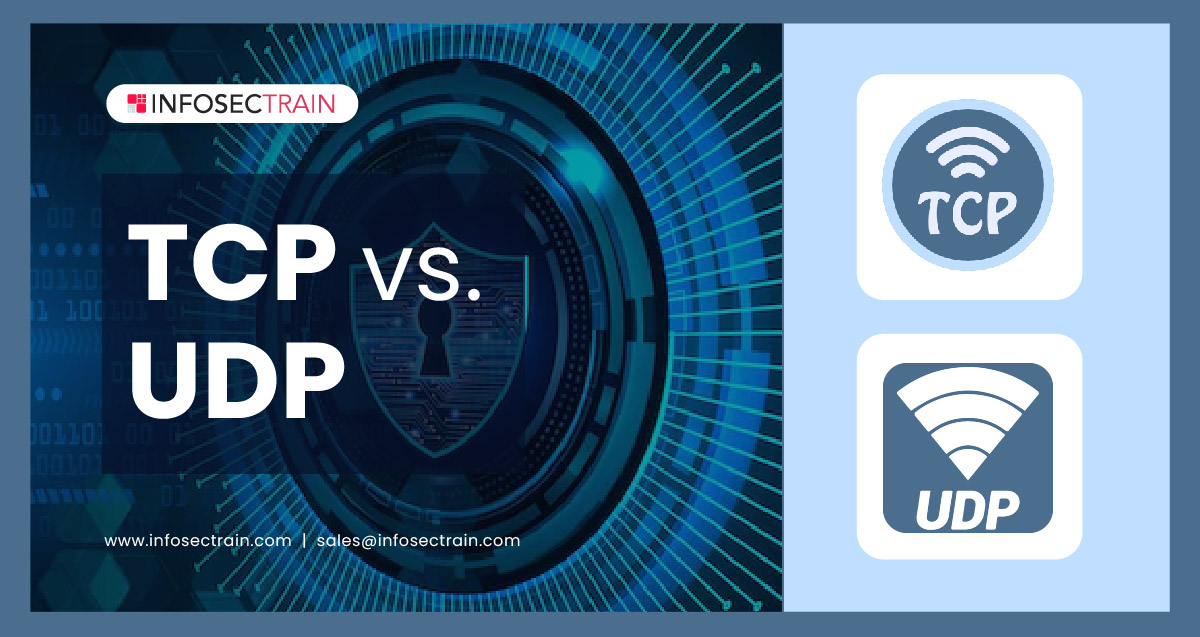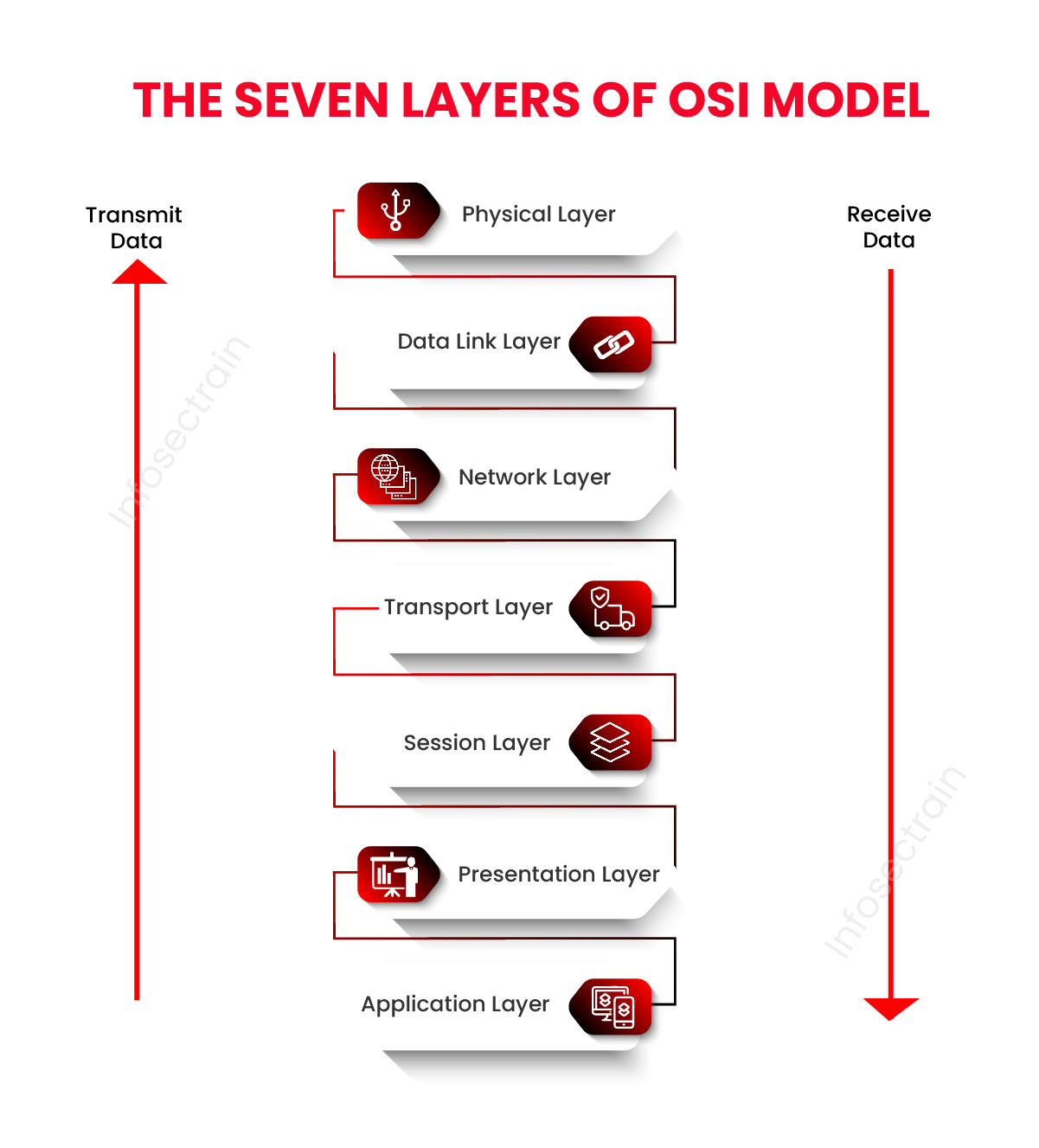TCP Vs UDP

Table of Contents
Transmission Control Protocol (TCP)
User Datagram Protocol (UDP)
TCP vs. UDP
Advantages of using TCP
Advantages of using UDP
Disadvantages of using TCP
Disadvantages of using UDP
The TCP and UDP are the communication protocol, which is a set of rules that enables entities to transmit data through any variation of a physical entity. It defines the syntax, rules, semantics, and synchronization of communications. These protocols are layered to form a protocol stack that allows for designing a single protocol. However, the Open System Interconnection (OSI) model defines seven communication layers.

The TCP (Transmission Control Protocol) and the User Datagram Protocol (UDP) will come under the Transport layer, which provides the transparent transfer of data from the source host to the destination host.
Transmission Control Protocol (TCP)
Transmission Control Protocol (TCP) is a protocol that provides a reliable, scalable, and end-to-end byte stream over a network. It has an error detection and recovery mechanism for data delivery services. TCP helps to create virtual networks when multiple computers are connected to the network.
The features of TCP are as follows:
- Reliable Data Delivery
- End-to-end delivery Acknowledgement
- Routable Protocol
- Re-transmission
- Easy to detect errors
User Datagram Protocol (UDP)
User Datagram Protocol (UDP) is a datagram protocol that is associated with a packet-switched network. It is used for multicast and broadcast network transmission, and UDP is an unreliable protocol but uses IP services to offer the best delivery mechanism.
The features of UDP are as follows:
- Supports bandwidth-intensive application that tolerates packet loss
- Less delay and sends a bulk quantity of packets
- Allows small transactions
- Quickly delivers data over the internet
TCP vs. UDP
Let’s see the difference between TCP and UDP.
| TCP | UDP |
| TCP reads the data as a stream of bytes and transmits the message to segment boundaries. | The message contains a packet that sends one by one and checks for the arrival time of integrity. |
| It sends the messages across the internet from one computer to another. | One program can send lots of packets to others. |
| It rearranges the data packets in a specified order. | No fixed order because all the data packets are independent of each other. |
| TCP is slower than UDP. | UDP is faster and simpler than TCP. |
| The header size is 20 bytes. | The header size is 8 bytes. |
| It is heavy-weight and requires three packets to set up a connection before the user sends the data. | It is light-weight, and there are no tracking connections, message ordering, etc. |
| It provides error checking and error recovery. | It performs error checking, but it discards the errors. |
| It delivers Acknowledged segments. | No Acknowledged segments. |
| It uses the handshake protocol like SYN, SYN-ACK, ACK, which is called three-way handshake. | It does not use handshake protocol. |
| It is reliable and ensures the data delivery to the destination. | It can’t guarantee the data delivery to the destination. |
| It has a broad error checking mechanism because it provides flow control and data acknowledgment. | It has a single error checking mechanism used for checksums. |
| It is best suitable for an application that requires high reliability, such as World wide web (www), File Transfer Protocol (FTP), Secure Shell (SSH), etc., | It is suitable for an application that requires efficiency and speed, such as live streaming, Domain name system (DNS), VPN Tunneling, etc., |
Advantages of using TCP
The following are the advantages of using TCP:
- TCP helps to establish the connection between two different types of systems
- It supports many routing protocols
- Operates independently on any operating system
- It has a highly scalable client-server architecture
- It implements the error detection mechanism
- Provides flow control and congestion control
Advantages of using UDP
The following are the advantages of using UDP:
- No connection mechanism is required
- Uses bandwidth efficiently because of the small packet overhead
- No state information is needed at the end, which allows more clients to the server
- Receives data from more than one-host server
Disadvantages of using TCP
The following are the disadvantages of using TCP:
- More difficult to set up and maintain the protocol
- Slower than other protocols
- High probability of bit errors
- Replacement of protocol is not easy
- It doesn’t support a clear separation from protocols, services, and interfaces
Disadvantages of using UDP
The following are the disadvantages of using UDP:
- Lack of flow control
- Lack of guarantee delivery and packet sequencing
- Possible out-of-order delivery of messages
- Lack of error recovery
CompTIA Network+ training with InfosecTrain
InfosecTrain is a renowned training and consulting organization that offers instructor-led certification training on a wide range of IT and Cybersecurity domains. It has benefited many customers all over the world.
InfosecTrain offers a CompTIA Network+ certification training program that allows you to achieve the required skills to manage, configure, maintain and troubleshoot computer networks. Our well-experienced trainers will help you to clear all your doubts during the training session. To get more details, check out the course details and enroll now.







 1800-843-7890 (India)
1800-843-7890 (India)